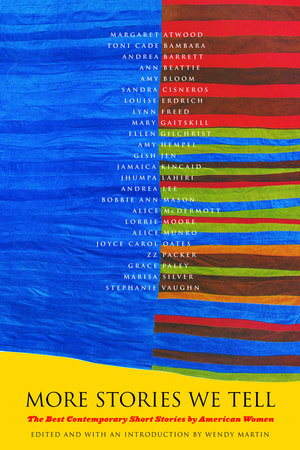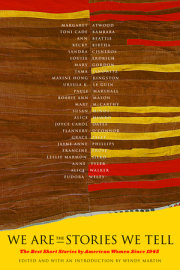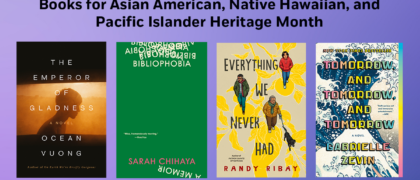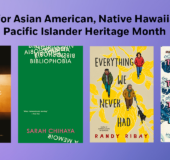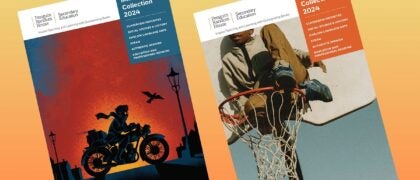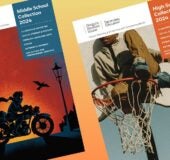Editor’s Introduction
When
We Are the Stories We Tell was published in 1990, American women writers had emphatically come into their own. Writing in a wide range of voices, they expressed the complexities and challenges of living in the second half of the twentieth century, an age of rapid change in which the psychological, cultural, and economic expectations and possibilities for women were in extraordinary flux. Building on the extremely positive response to We Are the Stories We Tell, this new collection seeks to provide representative narratives that are a pleasure to read and that portray women’s experiences in the final decades of the twentieth century and the beginning of the twenty-first.
Although today we take for granted that women writers command a large audience, it was not until after World War II that women from a wide range of backgrounds successfully entered the literary marketplace. The rapid urbanization of the postwar period as well as the dramatic increase in educational and employment opportunities created greater visibility for women in public life than ever before. In spite of a return to domesticity and the “feminine mystique” in the 1950s, there was a growing concern for disenfranchised groups and an increased sensitivity to hierarchical power relationships throughout the 1960s and 1970s. A heightened awareness of the social construction of gender as well as class and race, along with the invention of birth control, set the stage for new lives for women.
In addition to the impressive increase in women’s educational and employment opportunities, the closing decades of the twentieth century have been marked by significant changes in family structure as well as shifting expectations about the female life cycle: More women today marry later, have fewer children, and work outside the home. Half of all first marriages now end in divorce, and the percentage of households headed by women has risen correspondingly, as has the number of single women without families. With these developments come increased autonomy and freedom of choice, along with increased responsibility. And these shifts in the lives of women have meant shifts in the literature they write as well.
The short story is the genre that perhaps registers most readily and rapidly the political and personal changes in women’s lives from childhood and adolescence to adulthood, from menstruation, celibacy, sexual intimacy, pregnancy, miscarriage, abortion, childbirth, and motherhood to menopause, aging, and finally death. Its compressed form captures the kaleidoscopic richness and variety of contemporary lives in flux, revealing the pressure points in our culture. Certainly, the number of stories about divorce, about the rewards and difficulties of raising children alone or in blended families, and about episodic relationships has increased dramatically. In this volume, we see a range of women’s responses to these challenges in the stories of Amy Hempel, Gish Jen, and Jamaica Kincaid, among others.
Cultural diversity has continued to be an important force in women’s fiction at the turn of the twenty-first century. As with the previous collection, the stories in this volume are written by women from African, Hispanic, Asian, Native American, Jewish, and European traditions. These narratives delineate the often complex contours of women’s experience, illuminating what has been occluded as well as excluded. They give meaning to the observation that the personal is political, making clear the need for continuing struggle and risk-taking as women reshape their lives.
Many writers on the margins, such as multicultural and lesbian women, challenge traditional narratives that focus on romantic love, the nuclear family, and lifelong monogamous marriage. Perhaps because these writers never had expectations or illusions of control, choice, or privilege, they seem to have summoned up an energy that is life-affirming; for them, necessity is often the mother of invention, giving rise to imaginative and engaging stories told in highly expressive and vigorous language. In the first story in this collection, “The Lesson,” Toni Cade Bambara conveys this sense of positive determination when her spunky protagonist, Sylvia, declares, “Ain’t nobody gonna beat me at nothin.” A similar spirit can also be found in the stories of Sandra Cisneros, Louise Erdrich, Jhumpa Lahiri, ZZ Packer, and Grace Paley, which introduce new voices, new narratives, and new possibilities for interpreting experience.
Love in all of its aspects continues to figure prominently in women’s writing, although many of the writers here challenge accepted romantic ideals. In this volume, Amy Bloom and Ellen Gilchrist create portraits of domesticity that offer a bulwark against life’s vicissitudes, while Mary Gaitskill and Stephanie Vaughn expose the fissures and rifts of family life, including domestic violence.
Disappointment, disillusionment, and dependency, tentatively explored in
We Are the Stories We Tell, have become major concerns in recent decades. Many writers in
More Stories We Tell deeply question traditional ideals including a happy marriage and family life; others mourn the loss of economic and emotional support on which they depended. Female protagonists in this elegiac fiction are sometimes mired in relationships with men who are portrayed as careless and callow, and these negative narratives are often filled with loss and anger instead of confidence and hope.
Some of these stories portray extramarital affairs that parody problematic marriages by playing out the tension between dependence and autonomy against a backdrop of illicit eroticism. Ann Beattie’s “The Burning House” provides an excellent example of an affair that mirrors the dissatisfaction and disillusionment with bourgeois marriage; Margaret Atwood’s “Hairball” savagely attacks the smug conventions of marital propriety; and Andrea Lee’s “The Birthday Present” offers an imaginative, if cynical, solution to marital infidelity. Other stories reflect the growing realization among contemporary women that men cannot save them; men are no less vulnerable, in spite of our cultural expectation that masculinity is autonomous and unflinching. The women in these stories must save themselves.
Women are increasingly learning to find meaning in their professional and public lives. Although women have always worked, only in recent decades has their work outside the home been valued. Since 1970, women have entered the public sphere in huge numbers, so much so that currently more than half of all married women with children have paying jobs. Today, most women expect to be part of the workforce. This participation in the wider world has led to increased financial power, greater self-esteem, and broader social engagement. The stories by Andrea Barrett and Lorrie Moore delineate the complex interactions between work and love as well as celebrate these new opportunities for women to take their place in public life.
As this extraordinary social flux continues to reshape American society, we can look forward to deeper explorations of new possibilities. We will see more stories about love that go beyond sentimental prescriptions; more stories in which people are partners in various undertakings rather than lifelong mates for all aspects of life; more stories celebrating love in all its variety—between mothers and children, siblings, lovers, and friends. We will also see more stories about nonromantic friendship between women and men; more stories about friendship as well as erotic love between women; more stories that value reciprocity, mutual enjoyment, humor, cooperation, and complementarity. Finally, we will see more stories about women at work, work that is challenging and deeply satisfying.
Writers of fiction write from experience, capturing life as it is actually lived in a given historical moment. Think of these stories as wrestling with the cultural restraints and social prohibitions that have been with us, sometimes for centuries—restraints and prohibitions that, however frustrating, are giving way to greater personal freedom and a broader range of choices. These stories mirror this transformation.
Copyright © 2004 by edited by Wendy Martin. All rights reserved. No part of this excerpt may be reproduced or reprinted without permission in writing from the publisher.

